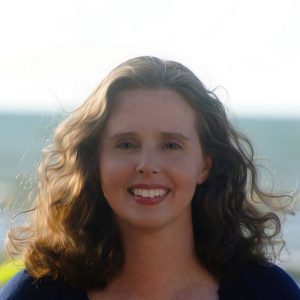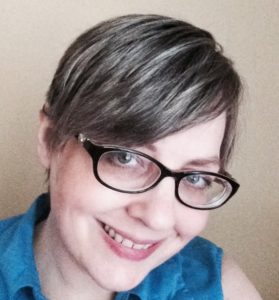It’s not always easy creating a whole world from scratch. Amy C. Blake agreed to give a few words of writing advice about building story worlds.
What is a common pitfall fantasy writers fall into when building their story world?
It’s easy for fantasy writers to forget they have to follow the “rules” they created for their story world. If they choose to break a rule, they have to explain why. Otherwise, readers get frustrated. For instance, in the first book of my Levi Prince YA fantasy series, I established that people can only enter Terracaelum (an invisible land suspended above Lake Superior) from Castle Island when the prince or princess lowers the drawbridge and admits them. In subsequent books, I couldn’t simply ignore my rule when I needed to allow access without the prince or princess being present. I had to not only create an alternate way in, but also to provide a logical reason why the exception was made.
What essential ingredients do readers expect from a story world?
Besides clear rules, readers expect to be given the proper amount of details to let them experience the story world. Too many specifics can bog down the flow of the story, but too few can make readers feel unmoored. Sprinkling sensory details throughout the dialogue and narrative tends to work best. Of course, in fantasy stories, readers expect something outside of their ordinary worlds—superhuman abilities, time jumping, mythical creatures, etc.—and they can best enjoy those elements when given the right particulars at the right moments.
How can writers make sure they balance their novel in regards to world building, character development, and the other elements needed?
Again, it’s a matter of dispensing information at the optimal time. Authors shouldn’t do an information dump about their character’s backstory any more than they should pile on too much minutiae about the story world. They don’t want to overuse dialogue, internal monologue, or narrative in any one spot; instead, they want to use the appropriate amounts of each at the appropriate times. It’s all a matter of finding the proper pacing to allow the story to unfold to maximize the reader’s delight.
Where do you find inspiration for creating a story world?
I’m an avid reader, and my family enjoys exploring museums and historical sites. I’m also an avid daydreamer, so I tend to find inspiration during quiet moments—sometimes while on a long car ride or when I can’t sleep. During those quiet moments, ideas blend with the information I’ve gleaned, and my story world expands. I just have to remember to jot down my daydreams so I can flesh them out later.
Great advice!
Thank you so much for stopping by, Amy.

Award-winning author Amy C. Blake is a pastor’s wife and homeschooling mother of four. She has an M.A. in English from Mississippi College and has written articles, devotionals, and short stories for a number of publications. She’s also writing two series for the Christian market, her On the Brink Christian suspense trilogy and her Levi Prince YA fantasy series.
Whitewashed, Colorblind, and Tie-Dyed, featuring three homeschooled girls who head off to college and find themselves on the brink of danger, are available in paperback and Kindle. The Trojan Horse Traitor, The Fall of Thor’s Hammer, and The Fay’s Apprentice, about homeschooled pastor’s kid Levi Prince and his adventures in Terracaelum, are also available in paperback and Kindle.
Visit Amy’s website at amycblake.com.

Donna Jo Stone writes YA contemporary novels about tough issues but always ends the stories with a note of hope. She blogs at donnajostone.com.




No Comments